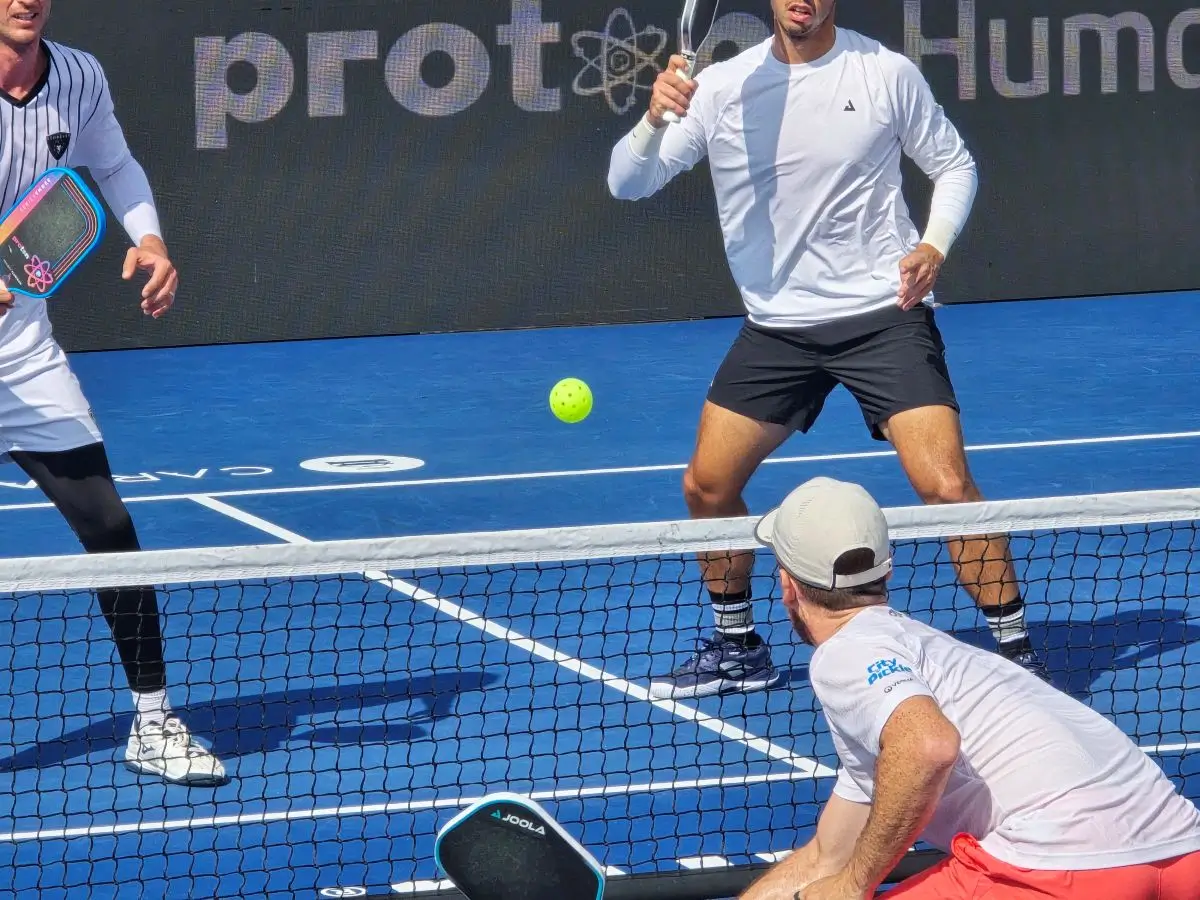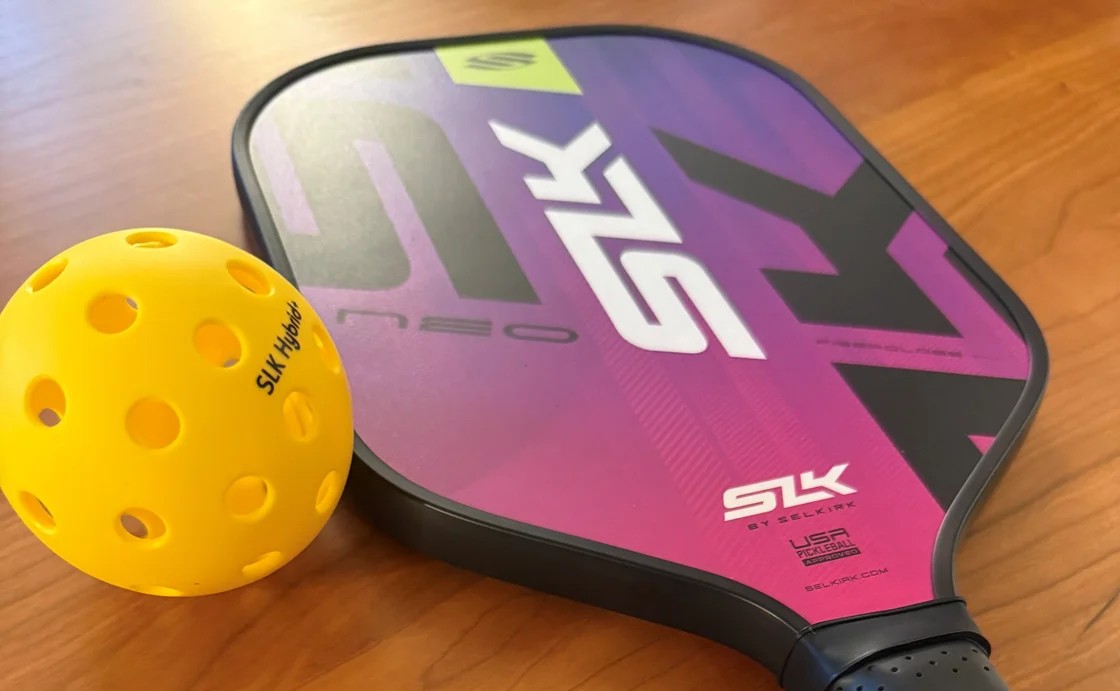Beginner Paddle Guide: 14mm vs 16mm
Trying to decide between a 14mm or 16mm pickleball paddle? This beginner-friendly guide breaks down paddle thickness, pros and cons, and which one you should choose.

Are you wondering whether to buy a 14mm or 16mm pickleball paddle as a beginner? Picking your first paddle can be confusing, especially when every millimeter seems to make a difference. In this beginner pickleball paddle guide, I will share thoughts from my own paddle journey and help you understand the key differences between 14mm and 16mm paddles.
I have played with a wide range of pickleball paddle thicknesses, from 12mm to 16mm and everything in between. But I have mostly used 14mm paddles throughout my journey. Over the years, I have tested top pickleball brands like Joola, Paddletek, CRBN, Holbrook, and Proton. Recently, as I have matured as a player, I decided to switch to a 16mm paddle as my main. Here is why:
Pickleball Paddle Thickness Explained
The thickness of a pickleball paddle, measured in millimeters, has a direct impact on performance. The two most popular options are 14mm and 16mm. While the numbers seem close, the feel and control they offer are drastically different.
- 14mm Paddles are thinner and typically offer more pop and power. The ball tends to spring off the face faster, making drives and counters feel crisp and aggressive.
- 16mm Paddles are thicker and more control-focused. They absorb more energy from the ball, allowing for better touch and feel, especially during soft shots and kitchen play.
Pros and Cons: 14mm vs 16mm Paddles
14mm Advantages:
- More power and pop
- Faster off the face for quick counters
- Slightly lighter in weight
- Ideal for aggressive players and fast-paced rallies
14mm Drawbacks:
- Less control during dinks and resets
- Smaller sweet spot
- Less forgiving on mishits
16mm Advantages:
- Superior control and accuracy
- Larger sweet spot for more forgiveness
- Better performance on resets, dinks, and drops
- Excellent for strategic players and kitchen play
16mm Drawbacks:
- Reduced power
- Heavier feel (varies by brand)
- May feel less responsive to some players
What Players Think: 14mm vs 16mm
Among beginner and recreational players, 14mm paddles are often favored for their instant feedback and power. You feel the ball jump off the paddle, which can be satisfying and confidence-boosting at first. However, that pop can make it harder to execute finesse shots and maintain consistency in longer rallies.
16mm paddles are frequently recommended by advanced players and coaches for their superior control. As you progress in skill level, you start to realize that shot placement and consistency win more points than raw power. Drives might score occasionally, but drops and resets win matches.
There is also a common misconception that thinner paddles are for pros while thicker ones are for beginners. But many top pickleball professionals use 16mm paddles for their reliable performance. It's not about playing flashy; it's about results.
My Paddle Journey: From 14mm to 16mm
I spent a year playing with 14mm paddles because I liked the pop and quick feedback. I could generate power easily and play an aggressive game. But as I began competing against stronger opponents, I noticed a weakness in my resets and soft game.
I am currently switching back to a 16mm pickleball paddle and adjusting several aspects of my technique. The main change I'm working on is to swing more intentionally to create pace. But it's worth it. My dinks are landing with more precision, and my drop shot success rate has climbed. I am landing more resets in the kitchen and my defense overall has improved.
The only downside? I do miss the easy pop on drives and the lighter feel of a 14mm paddle. But I would gladly trade that for the consistency, forgiveness, and control I now have with a 16mm.
Conclusion: Which Paddle Should a Beginner Choose?
If you are a beginner searching for the best pickleball paddle thickness, I highly recommend starting with a 16mm paddle. It offers more control, a bigger sweet spot, and room for growth. Power is something you can develop over time, but touch and precision require the right tools from the start.
Once you build a solid foundation, you can always explore thinner paddles to see what fits your playstyle best. But to start off strong and avoid common mistakes, the 16mm pickleball paddle is usually the smarter choice.
Whether you choose 14mm or 16mm, understanding how paddle thickness affects your game will help you make a confident and informed decision.
While paddle thickness affects feel and control, the surface grit of a paddle plays a huge role in spin generation and consistency. A gritty surface can help you shape shots, add topspin to your drives, and execute trickier third shot drops with more bite. If you want to dive deeper into how paddle grit works and what to look for, check out my full breakdown on the topic here.







